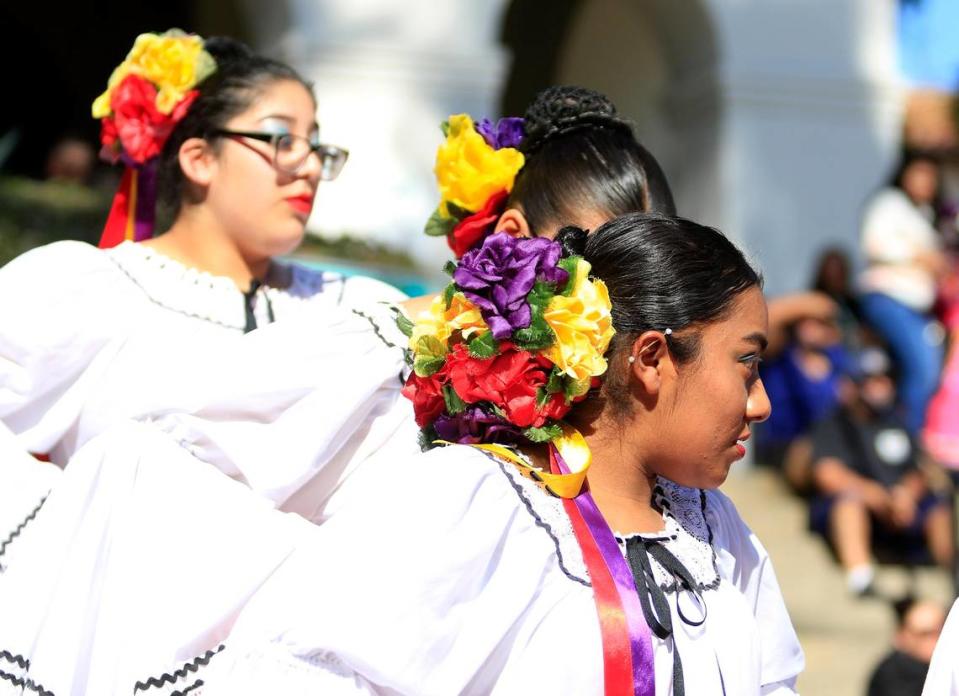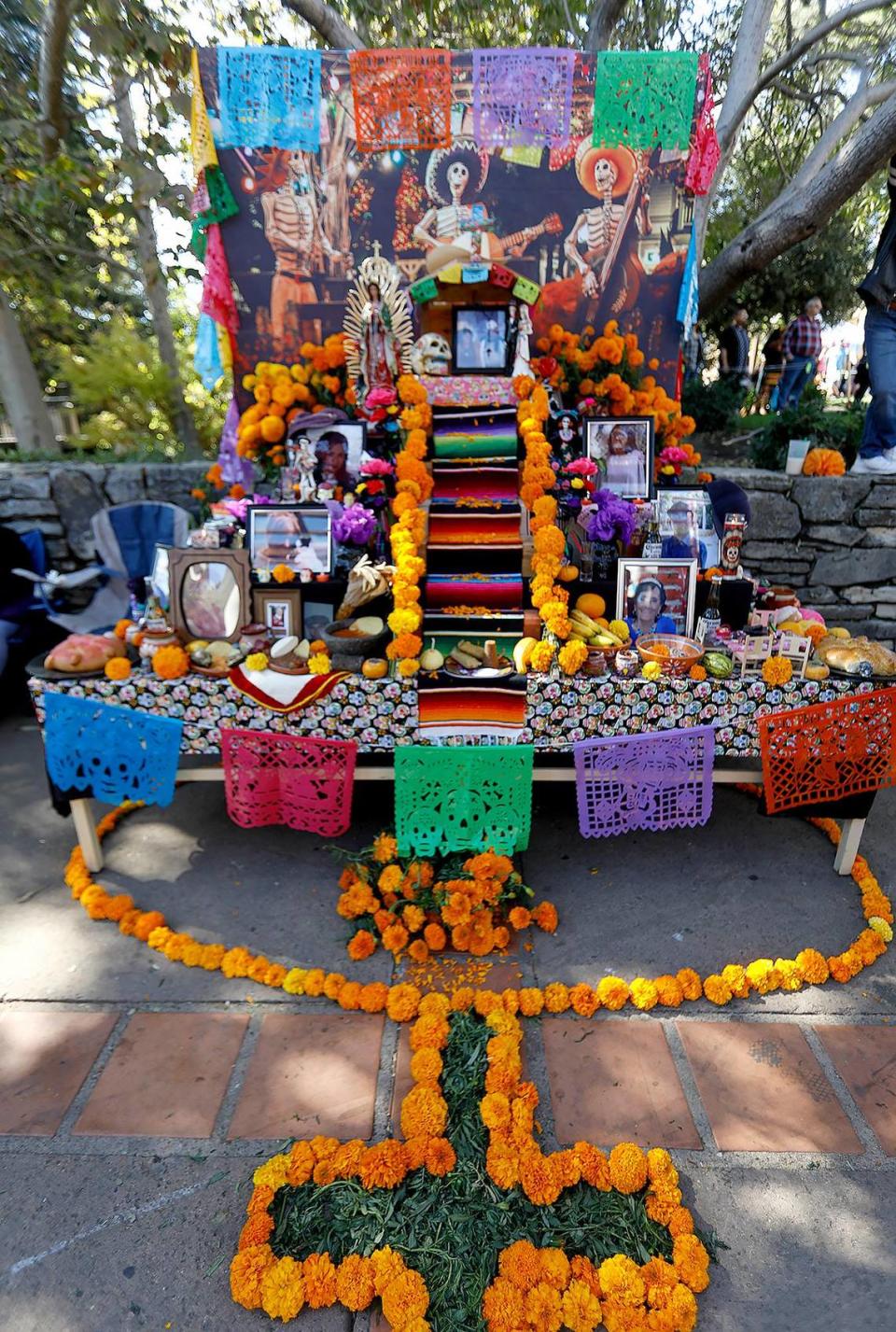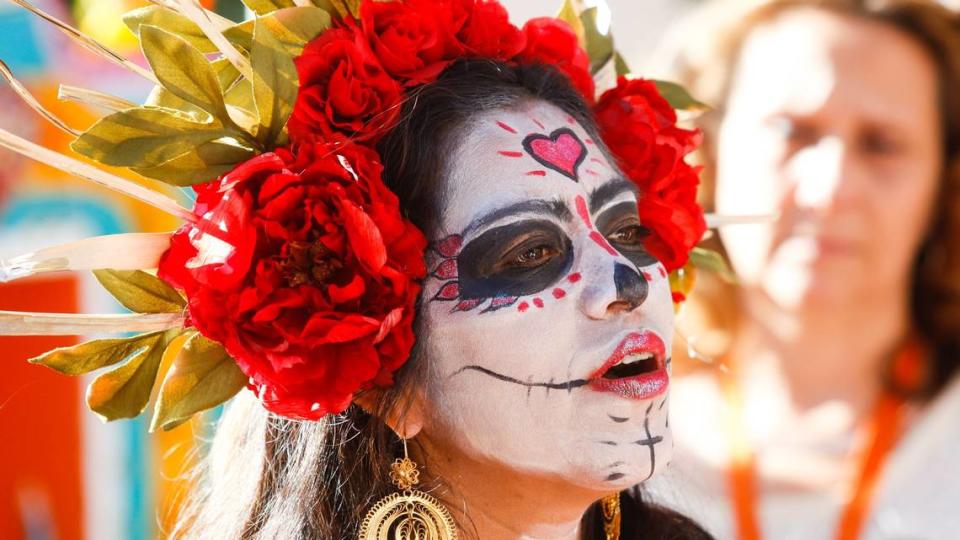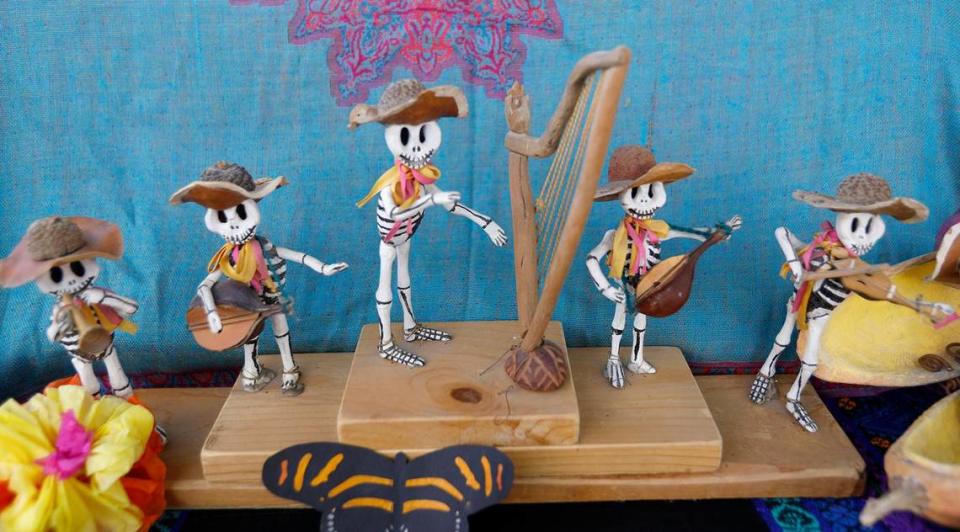Día de los Muertos festival returns to SLO after pandemic. ‘A truly joyful celebration’
Every autumn, visual artist Siu Yin Luna decorates an altar in her San Luis Obispo County home with bright orange marigold flowers, candles and photos of loved ones for Día de los Muertos, a Latin American holiday that honors friends and family members who have died.
“It is a truly joyful celebration,” Luna said. “It is when our ancestors visit us at our home and in our hearts.”
This year, she’s looking forward to celebrating with her community.
After a three-year hiatus due to the COVID-19 pandemic, a Día de los Muertos festival is returning to downtown San Luis Obispo.
The event, hosted by the Latino Outreach Council, runs from 2 to 6 p.m. Sunday in Mission Plaza.
Highlights include a costume contest, face paining, entertainment and decorated altars known as ofrendas, according to event co-organizer Claudia Cabrera Olsen. There will also be food vendors and booths sharing San Luis Obispo County resources.
Aztec and ballet folklorico dancers will perform at 2 p.m., followed by Mexico-based band Mariachi Santa Cecilia at 3:30 p.m.
Afterwards, a DJ will play music while San Luis Obispo’s Nexus Dance Studio offers dance lessons.
Cabrera Olsen said that community members are welcome to join the festivities even if they don’t have Latin American heritage.
“It’s for everyone to participate,” she said, if they’re coming from “a place of respect.”

What is Día de los Muertos?
As practiced in countries including Mexico, Día de los Muertos — Day of the Dead in English — is a two-day holiday. Nov. 1 is dedicated to children who have died, while Nov. 2 is about remembering adults.
“It’s not a sad celebration,” Cabrera Olsen said. “It’s a way to keep their legacy and spirit alive.”
In Cabrera Olsen’s hometown of Oaxaca, Mexico, every village specialized in a different offering for Día de los Muertos, she said.
Some grew marigold flowers, while others sold pan de muerto, a sweet bread with a soft, fluffy texture similar to challah bread, she said.
Growing up, Cabrera Olsen and her family would travel 30 miles north of their home to a village famous for its pan de muerto. There, she recalled, the warm fragrance of baking bread wafted out of open windows, encouraging passersby to purchase a loaf.
On the holiday, relatives trade baskets filled with homemade mole, bread, and other treats while celebrating their ancestors together.
Families also clean the cemetery and decorate ofrendas with items for their ancestors.

How to decorate a Day of the Dead altar
Each ofrenda includes items that represent the four elements, Cabrera Olsen said.
Candles represent fire and light the way for the ancestors to visit from the afterlife. Marigolds, which have a strong fragrance, are placed on the ofrenda to guide the spirits home.
A glass of water, pan de muerto, and the ancestor’s favorite foods are left on the ofrenda to nourish them after their long journey from the afterlife, Cabrera Olsen said.
Wind is represented by papel picado, which are traditional paper banners featuring decorative cutouts.
Meanwhile, salt “represents the flavor of life,” Cabrera Olsen said, and copal incense cleanses negative energy.
Sugar skulls, which represent the cycle of life, and family photos also decorate the ofrenda, she said.
During the early 1900s, La Catrina, a skeleton wearing a hat decorated with flowers, joined the Día de los Muertos celebration.
Mexican illustrator Jose Guadalupe Posada sketched her to satirize the wealth gap in Mexico with the message: “At the end, we are all bones,” Cabrera Olsen said. “It was a protest.”

How did SLO start celebrating holiday?
Cabrera Olsen organized her first Día de los Muertos festival in San Luis Obispo during the early 2000s, she said.
Many Latino families in San Luis Obispo County aren’t able to travel to their hometowns for Día de los Muertos, Cabrera Olsen said, so she wanted to host a festival where families could celebrate the holiday while teaching their children and neighbors about the tradition.
“It’s a lot of work, but it’s a labor of love,” Cabrera Olsen said.
“It’s a celebration that will bring us all together,” she added. “In this time of division, we want to promote unity.”
Folks can also celebrate Día de los Muertos in Paso Robles on Saturday, Nov. 4, according to a Facebook post. The celebration will be held at the Kuehl-Nicolay Funeral Chapel on Spring Street from 2 p.m. to 6 p.m.


